No matter what kind of hunting you’re after, Kansas has the perfect adventure for you. From big game animals like deer to small critters like rabbits, there’s something here for everyone. With its wide open spaces and abundant wildlife population, The Sunflower State is an ideal spot to experience the outdoors.
Kansan hunters are in luck – they can find plenty of opportunities throughout the state. Wildlife management areas offer year-round access to a variety of species while public lands provide great places to explore and hunt on both large national forests or smaller state parks and preserves alike. If it’s privacy that you’re looking for, private land leases give those exclusive experiences too.
In this exhaustive guide, we will take a detailed look at everything you need to know about hunting in Kansas. Whether it’s what type of animals you can hunt, where to hunt them, hunting seasons, and license information, we’ve covered it all!
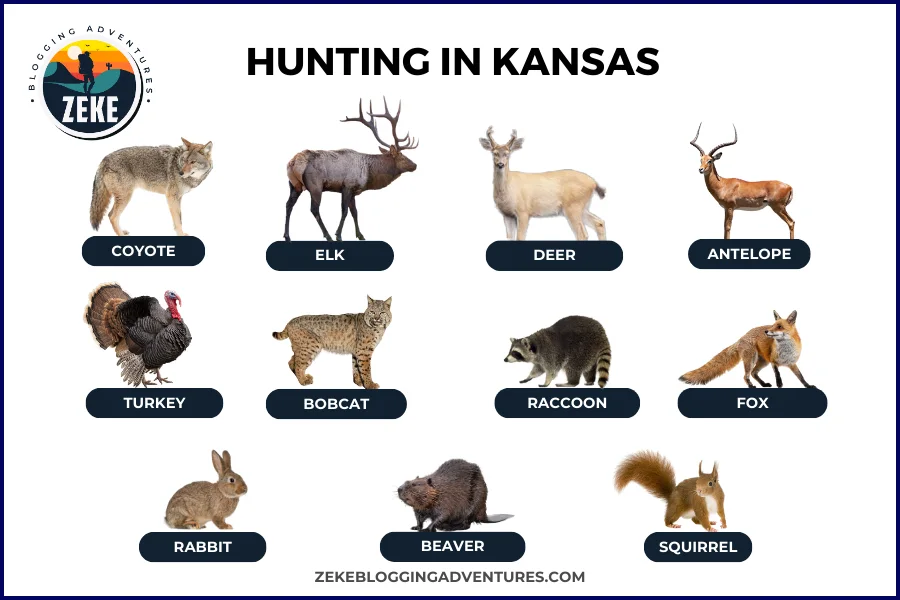
What Can You Hunt in Kansas?
Hunting in Kansas can be a thrilling experience, with five of the state’s most popular big game species – whitetail deer, mule deer, antelope, elk, and pronghorn. Whitetails are by far the most sought-after quarry for hunters here; over 70% of them chase these majestic animals each year.
Mule deer come next on the list as around 20 percent look to take home one of these beautiful creatures annually. Antelope remains third in popularity among Kansan hunters while elk and pronghorn follow suit at fourth and fifth respectively.
Small game enthusiasts will also find plenty to their liking when they head out into this part of America’s heartland: pheasant, quail, dove duck, and turkey all populate various parts within Kansas’ borders so there is always something new to hunt.
Deer
Looking for a wild adventure? Look no further than Kansas, the ideal spot to witness two beautiful deer species in their natural habitat – mule deer and white-tailed deer.
Seeking out mule deer? Head west; they prefer the High Plains, Smoky Hills, and Red Hills regions of the state. But if it’s white-tail you’re after, their populations have increased drastically throughout Kansan lands over the last two decades – so much so that you can find them anywhere there’s suitable habitat.
The highest concentrations of these majestic animals are found in the eastern parts of Kansas. So buckle up your boots and grab your binoculars: an unforgettable outdoor experience awaits!
Deer Season Kansas
| Season | Dates | Location |
| Archery | Sep 12 – Dec 31 | Statewide |
| Muzzleloader | Sep 12 – Sep 25 | Statewide |
| Regular Firearm | Nov 30 – Dec 31 | Statewide |
| Youth/Disability | Nov 30 – Dec 11 | Statewide |
| Pre-rut Whitetail Antlerless-only | Oct 08 – Oct 10 | Statewide |
| Ft. Leavenworth Archery Extended | Jan 23 – Jan 31 | Fort Leavenworth |
| Ft. Leavenworth Firearm (1st Segment) | Nov 12 – Nov 13 | Fort Leavenworth |
| Fort Leavenworth Firearm (2nd Segment) | Nov 19 – Nov 20 | Fort Leavenworth |
| Ft. Leavenworth Firearm (3rd Segment) | Nov 24 – Nov 27 | Fort Leavenworth |
| Fort Leavenworth Firearm (4th Segment) | Dec 03 – Dec 04 | Fort Leavenworth |
| Fort Leavenworth Firearm (5th Segment) | Dec 10 – Dec 11 | Fort Leavenworth |
| Ft. Leavenworth Firearm Extended | Jan 01 – Jan 22 | Fort Leavenworth |
| Smoky Hill Firearm | Nov 30 – Dec 11 | Smoky Hill |
| Fort Riley – Archery | Sep 12 – Dec 31 | Fort Riley |
| Fort Riley – Special Authorization Archery (1st Seg) | Sep 01 – Sep 11 | Fort Riley |
| Ft. Riley – Special Authorization Archery (2nd Seg) | Jan 01 – Jan 31 | Fort Riley |
| Fort Riley – Firearms (1st Segment) | Nov 25 – Nov 27 | Fort Riley |
| Ft. Riley – Firearms (2nd Segment) | Feb 17 – Dec 23 | Fort Riley |
| Fort Riley – Firearms (3rd Segment) | Dec 26 – Dec 27 | Fort Riley |
| Fort Riley – Youth/Disability (1st Seg) | Sep 03 – Sep 11 | Fort Riley |
| Ft. Riley – Youth/Disability (2nd Seg) | Oct 08 – Oct 10 | Fort Riley |
| Firearms Whitetail Antlerless | Jan 01 – Jan 08 | Units 6, 8, 9, 10, 17 |
| Extended Firearms Whitetail Antlerless | Jan 01 – Jan 22 | Units 10A, 12, 13, 15, 19 |
| Firearms Whitetail Antlerless | Jan 01 – Jan 15 | Units 1, 2, 3, 4, 5, 7, 11, 14, 16 |
Antelope
Hunting antelope in Kansas is a thrilling experience. With its diverse terrain and climates, this state boasts some of the best pronghorn, mule deer, white-tailed deer, and other small species like elk, bighorn sheep, and mountain goats.
To hunt these majestic animals in their natural habitat without worrying about trespassing on private land? Perfection! Spot & stalk hunting is the most popular technique for bagging an antelope here – getting close to them without disturbing their peace.
Alternatively, you can use decoys or call techniques to bring them closer. No matter your skill level or preference there’s something for everyone when it comes to chasing down that perfect trophy.
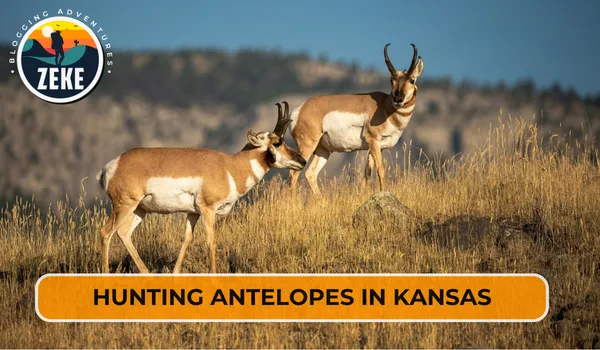
Antelope Season in Kansas
| Season | Dates | Unit |
| Early Archery | Sep 24 – Oct 02 | Unit 2, Unit 17, Unit 18 |
| Late Archery | Oct 15 – Oct 31 | Unit 2, Unit 17, Unit 18 |
| Firearm | Oct 07 – Oct 10 | Unit 2, Unit 17, Unit 18 |
| Muzzleloader | Oct 03 – Oct 10 | Unit 2, Unit 17, Unit 18 |
Elk
If you are heading out on an elk hunt in The Sunflower State, then you need to know some things before you go:
Getting the necessary permit from the Kansas Department of Wildlife and Park is a must. It will allow for hunting on public lands within certain areas – but make sure to double-check with game wardens or land managers about where it’s okay to hunt.
Familiarize yourself with all applicable regulations and restrictions too; season dates, bag limits, etc., should be taken into account before embarking on your journey.
Remember that elk are wild creatures so take appropriate safety measures such as wearing blaze orange clothing and carrying something like a whistle to alert other hunters of your presence in the field.
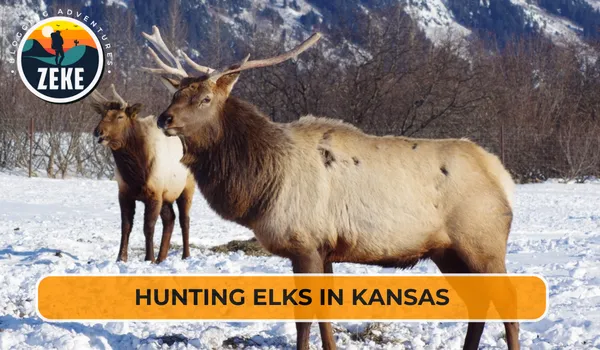
Elk Season Kansas
| Season | Dates | Location |
| Fort Riley – Firearms (1st Segment) | Oct 01 – Oct 31 | Fort Riley |
| Fort Riley – Firearms (2nd Segment) | Nov 01 – Nov 30 | Fort Riley |
| Ft. Riley – Firearms (3rd Segment) | Dec 01 – Dec 31 | Fort Riley |
| Ft. Riley – Archery/Muzzleloader | Sep 01 – Sep 30 | Fort Riley |
| Fort Riley – Any-Elk Permit Holders Firearm | Oct 01 – Dec 31 | Fort Riley |
| Outside Fort Riley – Archery | Sep 12 – Dec 31 | Units Mentioned on Permit |
| Outside Fort Riley – Firearms (1st Segment) | Aug 01 – Aug 31 | Units Mentioned on Permit |
| Outside Fort Riley – Firearms (2nd Segment) | Nov 30 – Dec 11 | Units Mentioned on Permit |
| Outside Fort Riley – Firearms (3rd Segment) | Jan 01 -Mar 15 | Units Mentioned on Permit |
| Outside Fort Riley – Muzzleloader | Sep 01 – Sep 30 | Units Mentioned on Permit |
Turkey
The 1960s saw great success in reintroducing wild turkeys to Kansas, and now they can be found in nearly every county. In the west of the state, Rio Grande subspecies dominate; whilst hybrid birds occupy northcentral regions.
The east however is where you’ll find big groups of Eastern turkeys – with numbers having skyrocketed over recent years. Although there are limited hunting opportunities down south-west due to low numbers.
Turkey Season in Kansas
| Season | Dates | Location |
| Spring Turkey – Early Archery Season | Apr 03 – Apr 11 | Units Stated on Permit |
| Spring Turkey – Late Archery Season | Oct 15 – Oct 31 | Units Stated on Permit |
| Spring Turkey Regular Season | Apr 12 – May 31 | Units Stated on Permit |
| Spring Turkey – Youth/Disabled Season | Apr 01 – Apr 11 | Units Stated on Permit |
Squirrel
When it comes to hunting squirrels in Kansas, late summer and early fall are the prime seasons. The best spots for finding these small mammals tend to be wooded areas like oak-hickory forests, riparian zones, or grasslands.
Make sure you check your local regulations before heading out on the hunt; some areas may not be accessible due to conservation efforts. For equipment, use a .22 caliber rifle or shotgun with #6 shot size shells – don’t forget binoculars.
Also, dress appropriately for whatever weather and terrain you come across during your quest – then get ready to bag yourself some tasty game.
Squirrel Season
| Species | Dates | Bag Limit |
| Squirrel | Jun 01 – Feb 29 | 5 |
Rabbit
Hunting rabbits in Kansas is an incredible experience, and with the season running from October to March it’s got plenty of time for you to plan your trip.
Make sure you have all the right gear; a reliable shotgun, quality ammunition, camo clothing, and accessories like binoculars or a knife.
The Flint Hills region is well-known for its plentiful cottontail rabbit population while jackrabbits thrive near Wichita on the prairies. You can also find them at Cheyenne Bottoms – so there’s no shortage of spots where they might be hiding.
To bag these critters, still-hunting works best – slowly walking through fields searching for signs of activity or movement before taking aim. Alternatively, try using decoys or calling devices as lures if that suits your style better.
Rabbit Season
| Species | Dates | Bag Limit |
| Cottontail, Jackrabbit | Jan 01 – Dec 31 | 10 per day |
Fox
Heading out to the field for a fox hunt in Kansas? Make sure you’re well-prepared with the right gear and safety protocols. Shotguns are a popular option among hunters due to their accuracy, range, and power.
Rifles can also be effective if that’s more your style. Don’t forget to load up on plenty of ammunition before you go – it’s always better to have too much than not enough.
Remember: Foxes tend to be most active during the early morning and late evening hours so plan accordingly when choosing the best time for hunting. A valid hunting license is also required for anyone looking to hunt either species of fox: red or gray.
Safety should always come first while chasing after these sly critters; wear reflective clothing or brightly colored garments so other hunters know where you are at all times, and make sure your firearm stays unloaded until ready for use.
Fox Season
| Species | Dates |
| Red Fox | Nov 15 – Feb 15 |
| Gray Fox | Nov 15 – Feb 15 |
| Swift Fox | Nov 15 – Feb 15 |
Bobcat
Bobcats are one of the most elusive animals in Kansas. Though they range across the state, even in their highest-density areas like the southeast, these creatures are seldom seen.
Bobcats usually remain close to cover and can often be found near shrubby edges of riparian woodlands or field borders, timberland, rocky ledges or outcroppings, and other brushy habitats.
Thanks to their spotted fur for camouflage purposes and their tendency to crouch rather than run away when startled they blend into nature almost perfectly; making it hard for us humans to spot them.
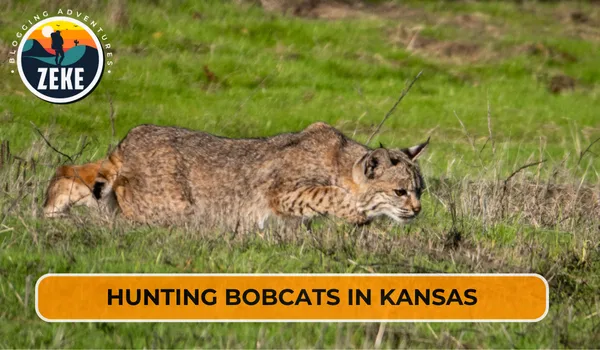
Bobcat Season
| Species | Dates | Note |
| Bobcat | Nov 15 – Feb 15 | Statewide |
Raccoon
Raccoons are truly remarkable animals. Intelligent, versatile, and abundant in Kansas, they are found all across the state – from rural areas to urban and suburban settings.
In prime habitat, research has estimated densities of up to 40 raccoons per square mile; however, more typical numbers average around 20-25 animals per square mile in good habitats.
They don’t have set territories either; instead, they coexist peacefully with their fellow raccoons at high population levels.
Raccoon Season
| Species | Dates |
| Raccoon | Nov 15 – Feb 15 |
Coyote
When it comes to coyote hunting in Kansas, you’ll need the right gear. Get outfitted with a rifle or shotgun and suitable ammo; don’t forget to bring along a good scope as well.
Camo clothing is essential for staying hidden from your target – if you blend into the environment, they’re more likely to appear. Coyotes are known for being alert creatures so make sure you hit the field early in the morning or late at night when they’re most active. Binoculars can come in handy too – spotting them won’t be easy.
Coyote Season
| Season | Dates | Bag Limit |
| Regular Season | Jan 01 – Dec 31 | No Limit |
| Night Vision Permit Season | Jan 01 – Mar 31 | ——- |
Beaver
As one of the biggest rodents in North America, beavers can weigh up to a whopping 100 pounds. These animals are true aquatic specialists – their tails and webbed hind feet make them natural swimmers, while membranes inside their ears and noses keep water out when submerged.
Beavers rarely wander too far from water sources for security purposes; they’re also great alarm systems as they slap the surface with their tails if danger is imminent.
Beaver Season
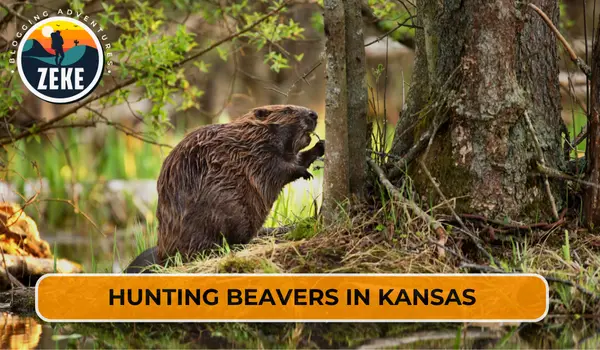
| Species | Dates |
| Beaver | Nov 15 – Mar 31 |
Weasel Season
| Species | Dates |
| Weasel | Nov 15 – Feb 15 |
Badger Season
| Species | Dates |
| Badger | Nov 15 – Feb 15 |
Mink Season
| Species | Dates |
| Mink | Nov 15 – Feb 15 |
Muskrat Season
| Species | Dates |
| Muskrat | Nov 15 – Feb 15 |
Striped Skunk
| Species | Dates |
| Striped Skunk | Nov 15 – Feb 15 |
Opossum Season
| Species | Dates |
| Opossum | Nov 15 – Feb 15 |
Quail Season
| Season | Dates | Bag Limit |
| Regular Season | Nov 12 – Jan 31 | 8 per day |
| Youth Season | Nov 05 – Nov 06 | 8 per day |
Pheasant Season
| Season | Dates | Bag Limit |
| Regular Season | Nov 12 – Jan 31 | 4 per day |
| Youth Season | Nov 05 – Nov 06 | 4 cocks per day |
Greater Prairie Chicken Season
| Species | Dates | Bag Limit |
| Greater Prairie Chicken | Sep 15 – Jan 31 | 2 |
Grouse Season
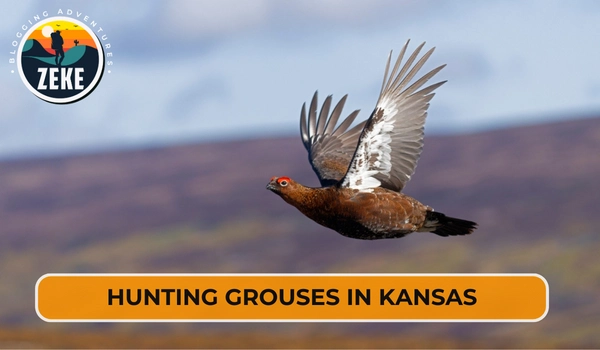
| Species | Dates | Bag Limit |
| Grouse | Sep 15 – Jan 31 | 2 per day |
Bullfrog Season
| Species | Dates | Bag Limit |
| Bullfrog | Jul 01 – Oct 31 | 8 |
Crow Season
| Species | Dates | Bag Limit |
| Crow | Nov 10 – Mar 10 | No Limit |
Duck Season
| Season | Dates | Bag Limit |
| Low Plains Southeast Zone (1st Segment) | Nov 11 – Jan 07 | 6 ducks per day |
| Low Plains Southeast Zone (2nd Segment) | Jan 13 – Jan 28 | 6 ducks per day |
| Low Plains Late Zone (1st Segment) | Oct 28 – Dec 31 | 6 ducks per day |
| Low Plains Early Zone (1st Segment) | Oct 07 – 03 Dec | 6 ducks per day |
| Low Plains Early Zone (2nd Segment) | Dec 23 – Jan 07 | 6 ducks per day |
| High Plains Unit (1st Segment) | Oct 07 – 31 Dec | 6 ducks per day |
| High Plains Unit (2nd Segment) | Jan 19 – Jan 28 | 6 ducks per day |
| Youth/Veteran (Low Plains Southeast) | Nov 04 – Nov 05 | 6 ducks per day |
| Youth/Veteran (Low Plains Late) | Oct 21 – Oct 22 | 6 ducks per day |
| Youth/Veteran (Low Plains Early) | Sep 30 – Oct 01 | 6 ducks per day |
Coot Season
| Season | Dates |
| Low Plains Southeast Zone (1st Segment) | Nov 11 – Jan 07 |
| Low Plains Southeast Zone (2nd Segment) | Jan 13 – Jan 28 |
| Low Plains Late Zone (1st Segment) | Oct 28 – Dec 31 |
| Low Plains Early Zone (1st Segment) | Oct 07 – Dec 03 |
| Low Plains Early Zone (2nd Segment) | Dec 23 – Jan 07 |
| High Plains Unit (1st Segment) | Oct 07 – Dec 31 |
| High Plains Unit (2nd Segment) | Jan 19 – Jan 28 |
| Youth/Veteran (Low Plains Southeast) | Nov 04 – Nov 05 |
| Youth/Veteran (Low Plains Late) | Oct 21 – Oct 22 |
| Youth/Veteran (Low Plains Early) | Sep 30 – Oct 01 |
Merganser Season
| Season | Dates |
| Low Plains Southeast Zone (1st Segment) | Nov 11 – Jan 07 |
| Low Plains Southeast Zone (2nd Segment) | Jan 13 – Jan 28 |
| Low Plains Late Zone (1st Segment) | Oct 28 – Dec 31 |
| Low Plains Early Zone (1st Segment) | Oct 07 – 03 Dec |
| Low Plains Early Zone (2nd Segment) | Dec 23 – Jan 07 |
| High Plains Unit (1st Segment) | Oct 07 – 31 Dec |
| High Plains Unit (2nd Segment) | Jan 19 – Jan 28 |
| Youth/Veteran (Low Plains Southeast) | Nov 04 – Nov 05 |
| Youth/Veteran (Low Plains Late) | Oct 21 – Oct 22 |
| Youth/Veteran (Low Plains Early) | Sep 30 – 01 Oct |
Goose Season
| Season | Dates | Bag Limit |
| Canada Geese | Oct 28 – Oct 29 | 6 |
| Canada Geese | Nov 01 – Feb 11 | 6 |
| Light Geese | Oct 28 – Oct 29 | 50 |
| Light Geese | Nov 01 – Feb 11 | 50 |
| White-fronted Geese | Oct 28 – Dec 31 | 2 |
| White-fronted Geese | Jan 20 – Feb 11 | 2 |
| Dark Geese | Oct 28 – Oct 29 | 6 |
| Dark Geese | Nov 01 – Feb 11 | 6 |
Teal Season
| Season | Dates | Bag Limit |
| Low Plains | Sep 09 – Sep 24 | 6 |
| High Plains | Sep 16 – Sep 24 | 6 |
Sandhill Crane Season
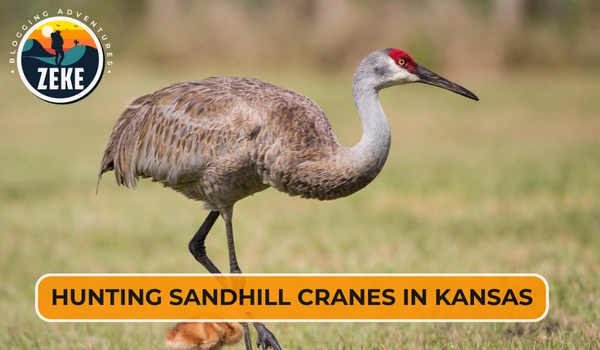
| Season | Dates |
| West Zone | Oct 21 – Dec 17 |
| Central Zone | Nov 08 – Jan 04 |
Woodcock Season
| Species | Dates | Bag Limit |
| Woodcock | Oct 14 – Nov 27 | 3 |
Snipe Season
| Species | Dates | Bag Limit |
| Snipe | Sep 01 – Dec 16 | 8 |
Rail Season
| Species | Dates | Bag Limit |
| Rail | Sep 01 – Nov 09 | 25 |
Dove Season
| Species | Dates |
| Exotic Dove | Jan 01 – Dec 31 |
| Mourning & Whitewing | Sep 01 – Nov 29 |
Kansas Hunting License Information
If you’re a hunter looking to take advantage of the great outdoors in The Sunflower State, you’ll need to make sure that you get yourself a valid hunting license.
You must be at least 16 years old and have completed your hunter education course if born after July 1, 1957. Moreover, you may also need proof of residency or a non-resident license depending on your situation
Once all requirements are met, acquiring your license is relatively straightforward – purchase one online through the KDWPT website or visit an authorized vendor near you for more options. Keep in mind there may be additional fees associated with certain licenses so it’s best to double check before buying.
A resident license costs $27 while a non-resident license costs $97.
It’s important to familiarize yourself with the laws governing hunting within Kansas such as bag limits and restrictions specific areas might require special permits/tags when planning out any trips into nature here – don’t forget about them! As long as all these regulations are followed though, happy hunting!
Where Can You Hunt in Kansas?
With the majority of Kansas land being privately owned, it can be difficult for non-residents to access public hunting licenses. But never fear – there’s still plenty of private land available that offers up exciting opportunities to hunt small and big game alike. The Walk In Hunting Access (WIHA) program gives hunters improved accessibility but sadly doesn’t quite boast the same quality as before.
Let’s take a look at some of the best public places to hunt in Kansas.
Public Hunting Places in Kansas
Flint Hills
The Flint Hills provide a stunning backdrop for any hunter’s experience, offering an abundance of wildlife and terrain perfect for stalking. From white-tailed deer to wild turkey, quail, pheasant, dove, rabbit, and fox – you won’t be short on variety when it comes to choosing your quarry. The rolling hills and open fields make it the ideal spot for tracking prey with ease.
When you’re ready to rest up after a long day in the field, there are plenty of options available from rustic cabins to RV parks complete with all the amenities you need – so whichever style suits best you can find something here that fits perfectly into your trip.
If hunting isn’t quite as second nature as it is for some then don’t worry – local guides abound who will offer helpful advice on where exactly they should go looking or what signs they should look out for.
Cimarron National Grassland
Cimarron National Grassland is a nature-lover’s paradise, with over 20,000 acres of public land for hunting and fishing. It’s home to an array of wildlife like deer, turkey, quail, and even elk. You can also find game such as rabbits and squirrels here.
From open prairies to rolling hills and dense woodlands – there’s something for everyone. In the springtime, you’ll see wildflowers dotting the landscape making it picture-perfect – so don’t forget your camera!
Whether you’re after some outdoor recreation or just looking for a peaceful escape from everyday life, Cimarron National Grassland has got you covered.
Tallgrass Prairie National Preserve
Nestled in the rolling hills of Kansas, Tallgrass Prairie National Preserve is home to some of the state’s most diverse wildlife. From majestic white-tailed deer to wild turkeys, there are plenty of opportunities for a successful hunt.
The preserve is divided into two distinct areas: The Tallgrass Prairie and Flint Hills. In the prairie area, hunters will find tall grasses as well as woodlands and wetlands that provide ideal habitats for game like quail, pheasants, and other birds. Meanwhile, in the Flint Hills region, you can come across elk or mule deer along with upland doves or grouse.
Before heading out on your hunting trip at Tallgrass Prairie National Preserve, keep in mind that all participants must possess a valid license and adhere to all federal laws regarding firearms which should be unloaded and cased while within park boundaries – only during designated seasons are they allowed anyway.
Cheyenne Bottoms
Cheyenne Bottoms Wildlife Area is a prime spot for waterfowl hunting. On weekends, in particular, the area sees heavy activity from eager hunters. But it doesn’t stop there; other game can also be taken legally at Cheyenne Bottoms—pheasant, snipe, and rail along the marsh borders are plentiful, with quail and deer present too. It’s a paradise for anyone hunting in Kansas.
McPherson Valley Wetlands Wildlife Area
McPherson Valley Wetlands Wildlife boasts an impressive 1,750 acres of wetland when full, providing spectacular scenery for bird watchers to witness the spring migration.
Birders can observe a variety of species native to the Central Flyway in all their glory. But that’s not all—the area also offers prime hunting opportunities for pheasants, quail and doves across its 650 total acres with two refuges spread throughout 51 independently managed pools. With so much land available, it’s no surprise this destination is managed intensively for waterfowl.
Smoky Hill Wildlife Area
Hunting is a popular activity at Smoky Hill Wildlife Area. Upland bird and white-tailed deer enthusiasts can take advantage of the abundant quail, pheasant, and prairie chicken present in its grasslands and brushy draws.
Waterfowlers also flock to the area for its plentiful riverside backwaters – teeming with Canada geese and mallards all season long. To access these far-off areas, hunters should come prepared with boats, carts, or backpacks.
Private Hunting Places in Kansas
With the majority of land privately owned, hunting in Kansas is an attractive option due to some of the best game in the U.S. When you hunt on private land in Kansas, there are fewer hunters and animals that aren’t as skittish – making for a more successful outing. In the past though, accessing private property has been costly and complex.
Nowadays, however, it can be made much simpler with creative solutions like leasing agreements or joining a local hunting club. So if you’re looking for a top-notch game without all the crowds then head out on your own piece of paradise.
